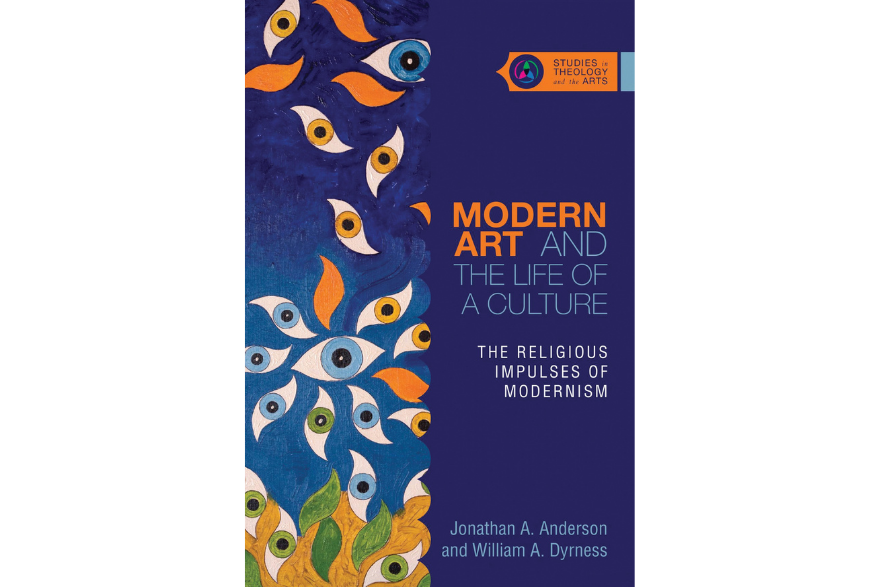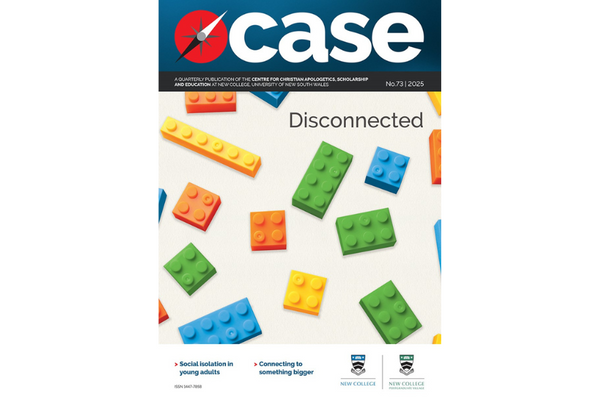Book Review - Modern art and the life of a culture

Modern art and the life of a culture: The religious impulses of modernism
Jonathan A. Anderson and William A. Dyrness, 2016.
Modern Art and the Life of a Culture by artist and art critic Jonathan Anderson and theologian William Dyrness, was written in response to the influential 1970 book Modern Art and the Death of a Culture by Dutch Christian scholar Hans Rookmaaker. Modern art refers to the period of art making from the mid-to-late 1800s, to roughly the 1970s. Encompassing a wide range of smaller movements (everything from Dada-ism and Surrealism to Abstract Expressionism), artworks made in this period were a response to a rapidly modernising world, and the dissolution of tradition. Since the early 20th Century, there has been a growing acceptance of a narrative regarding the art world: that of the waning influence of the Church and Christianity, and corresponding increase of secularism which has come to dominate modern art.
Modern Art and the Life of a Culture is partly an argument against the ‘secularisation’ thesis— the theory that modernisation implies and produces a decline of religion, both on an institutional level and on the level of individual belief. It argues against the notion that modern art and Christianity are completely divorced from one another, arguing instead that religious and theological themes underpin the art of much of the so-called ‘secular’ art of the 20th Century. Yet while modern art and Christianity are not divorced, Anderson and Dyrness nonetheless acknowledge a lamentable degree of estrangement:
The church and the seminary tend to have weak (or simply misinformed) understandings of modern and contemporary art history, while the museum and the art academy tend to have anaemic (or simply misinformed) understandings of theology. This book is an attempt to help bring the better parts of each into more meaningful contact with the other. (p329)
Part One of Modern Art and the Life of a Culture consists of two introductory chapters. The first places the authors’ work inside the relevant context and addresses the difficulties of the study; the second visits Rookmaaker, his background, and his work in more depth, and traces the impact of his book to the present day. Rookmaaker was of the opinion that modern art was devoid of all religious thought, and argued that the ‘evacuation’ of Christianity from modern art had allowed it to become completely secular. Anderson and Dyrness attempt to ‘recover the virtues’ of Rookmaaker’s work, as well as recognise his shortcomings, such as his extremely conservative criteria for ‘real art’, and his reductive handling of Modernism. They note that his often negative view of 20th century art largely manifests as a product of its time, and the historical context of the mid to late 1960s (think Cuban Missile Crisis, the racial violence that accompanied the Civil Rights Movement, the Kennedy Assassination, the Vietnam War, etc.).
Part Two of the book endeavours to show the inadequacy of the secularisation thesis, and bring the worlds of art and church back into conversation through five chapters of focused investigations. These follow the general time and place of Rookmaaker’s book, namely North Atlantic Modernism from about 1800 to 1970, the year that his book was published. It investigates the influence personal faith had on artists such as Van Gogh, and Gaugin, and the continuing influence of French sacramentality. It examines the Protestant threats in northern Modernism, as well as works influenced by iconography and liturgy, such as the work of Malevich. These works, the authors note, rather than being antagonistic or demeaning towards religion, are instead manifestations of the artists’ wrestling with theological and spiritual concerns.
In the final chapter, ‘North America in the Age of Mass Media’, the authors look at the writings and works of Allan Kaprow, John Cage, Robert Rauschenberg, and Andy Warhol. The authors argue for the theological elements in Kaprow’s ‘Happenings’, citing the religious and theological ideas that appeared in his writings. Analysis then turns to the work of John Cage, who tested the distinction between music and noise—in particular, 4’33, a ‘piano piece’ performed by pianist David Tudor in which not a single note was played on the piano. Cage labelled his work as ‘purposeful purposelessness’, an affirmation of life, an attempt to wake us up and attend to the moments in which we live. Cage had been raised a devout Christian, and continued to think about his work in relation to Christian theology, as well as Zen Buddhist practices. The authors believe that Rookmaaker should have found sympathy with Cage, but instead misinterpreted his work, regarding it as the epitome of meaningless and inhuman freedom (p298). A similar interpretation is applied to the work of Robert Rauschenberg, whose work Rookmaaker claimed to be arbitrary and vacuous. In contrast, Anderson and Dyrness argue that Rauschenberg’s work demonstrated spiritual longing and holy silences, particularly in the face of the noise and gesture of Abstract Expressionism.
Rookmaaker had stated that the work of these artists writes a message of no meaning, confronting us with the ugliness and evil of reality, and a godless world of silence. Anderson and Dyrness demonstrate that this is a reductive handling of these artists, each of whom struggled with God and spiritual, existential battles, which manifest in theologically charged artworks. The final chapter, in particular, demonstrates what it looks like to ‘conduct serious theological thinking in the visual culture of modern mass media’ (p326).
This book is an important read for anyone working within the fields of art history and theology, but it is not without limitations. Like much writing on modern art, it is heavily dominated by analysis of male-created art. Although references to seminal artists such as Hilma af Klint were appreciated (and highly relevant), they read as an afterthought. A book like this, with the intent of challenging conservative thinking regarding modern art would certainly benefit from breaking away from the male-centric narrative.
Nonetheless, it is refreshing to encounter a piece of academic writing that is critical of the secularisation thesis. Only in recent times has the academic world begun to re-evaluate the long-held stance on rising secularisation, recognising that this has been a white-centric, colonialist way of thinking, and that ideas of religion and spirituality are, in fact, not dwindling, but growing in many forms.
The secularisation thesis claims that modern art has severed itself from God, but Modern Art and the Life of A Culture suggests that the Church, too, has contributed to this narrative by secularising its understanding of modern art, placing it in a space supposedly separate from God. ‘Are we as Christians staying silent about modern art?’, the authors ask. When we separate the God of art from the God of theology, we choose to be silent about God’s sovereignty over art. Jesus warns that if we remain silent, even the stones will cry out.
Leave a comment
Comments will be approved before showing up.



